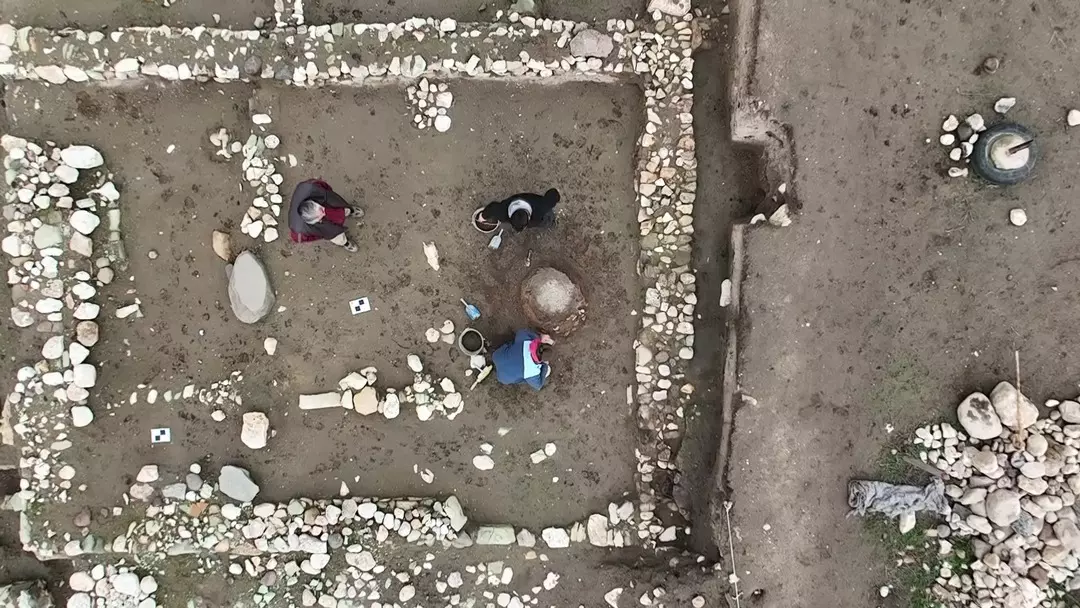The Bayeux Tapestry is one of the most celebrated works of medieval art, a nearly 70-meter-long embroidered masterpiece depicting the events leading up to the Norman conquest of England in 1066. Yet among its 70 intricate scenes and countless details of 11th-century life, a rather unexpected academic debate has emerged: does the tapestry feature 93 or 94 penises?
That’s right—penises. Some human, most animal. And historians are divided over the exact count.
First created just after the Battle of Hastings, the tapestry is believed to have been commissioned by Bishop Odo, the half-brother of William the Conqueror. It has been on display since 1983 at the Centre Guillaume le Conquérant in the French town of Bayeux and was added to UNESCO’s Memory of the World Register in 2007.
Despite its esteemed reputation, the tapestry’s surprising abundance of genitalia has sparked both curiosity and controversy.
93 or 94? The Penis Count Debate
In 2018, Oxford University professor George Garnett stated that the number totals 93 male genitals — 88 on horses and five on men
Source: Wikipedia
In 2018, Oxford University professor George Garnett made headlines by declaring that the tapestry depicts 93 penises—88 on horses and five on human figures. However, tapestry specialist Christopher Monk has argued that one more penis deserves recognition. He points to a soldier in the lower part of the tapestry whose unusually prominent anatomy is visible beneath his tunic.
“I have no doubt it’s a depiction of male genitalia,” Monk said in a recent episode of the HistoryExtra podcast.
Garnett, however, remains unconvinced. He believes the supposed penis is actually a sheath or weapon case, noting a golden orb at the tip that resembles the brass cap of a handle. “None of the other penises in the tapestry have a yellow spot on the end,” he explained.
This peculiar disagreement has reignited calls for a fresh analysis of the work. While a censored 18th-century copy exists in the Reading Museum in the UK—with most genitalia discreetly removed due to the era’s moral standards—it offers little help in settling the debate.
Why So Many?
So why are there so many penises in the first place? As with the exact number, the explanation isn’t entirely clear.
Medieval art is full of symbolism—from animals to flowers to colors—and the Bayeux Tapestry is no exception. Some historians believe the frequent depiction of genitalia may represent virility, power, or masculinity. A particularly notable example is the horse gifted to William the Conqueror, which is drawn with an especially large penis—a possible symbol of his legitimacy and strength as ruler.
However, tapestry expert Christopher Monk believes that one more penis deserves special attention
Source: Wikipedia
Others suggest these features may be playful or satirical, rooted in Aesopian fables or popular medieval folklore. “There are many interesting theories,” said historian David Musgrove on HistoryExtra, “but to be honest, we don't know for sure. What we do know is that these anatomical details are fascinating.”
Not Just a One-Off
Professor Garnett’s original findings—93 total penises, most on horses—were detailed in a 2018 paper that quickly went viral. “My academic colleagues had a good laugh,” Garnett admitted. “One of them even said, ‘You’re not just a historian—you’re a historian of masculinity!’”
He clarified that while the majority are simple anatomical details, three horses seem to have been drawn with particular attention to their genitalia. These horses are connected to key figures in the narrative, such as King Harold II of England and Duke William of Normandy, who are each shown riding stallions with distinctly exaggerated features.
“William’s horse has by far the largest penis,” Garnett observed. “And that is absolutely intentional.”
A Broader Artistic Tradition
The depiction of male genitalia in medieval art isn’t limited to the Bayeux Tapestry. As Garnett notes, similar motifs appear in sheela-na-gig carvings—grotesque female figures displayed on churches in the British Isles. The most famous example is found at Kilpeck Church in Herefordshire.
Interestingly, the Bayeux Tapestry includes no clearly rendered female genitalia—except in one ambiguous case, where a figure displays unusually dense pubic hair.
The depiction of human genitalia in medieval art is not unique to the Bayeux Tapestry
Source: Wikipedia
Whether it’s 93 or 94, the penis count in the Bayeux Tapestry may seem like a humorous academic footnote. But it opens up broader questions about how medieval artists used the body to convey power, identity, and satire—and how modern historians are still decoding those messages nearly a thousand years later.










